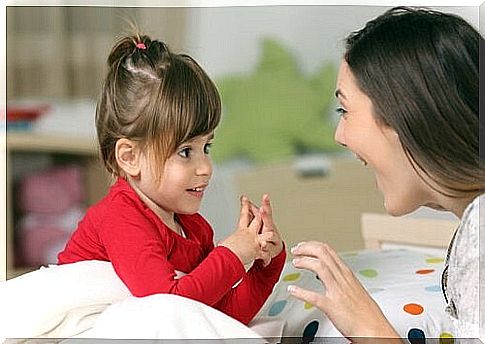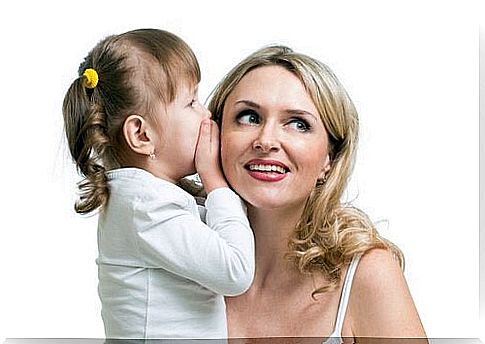Children’s Language Development From 0 To 6 Years Of Age

During the first years of a child’s development, development is faster than during any other period. Children develop mental skills, physically, psychologically and socially. Their language development between 0-6 years clearly shows these rapid and profound changes.
At those ages, children have a natural predisposition to learn. Therefore, early stimulation and a good family environment are important.
When it comes to language, people around the child play a particularly big role. To promote children’s language development, imitation is important, so role models in the environment are crucial.
0-12 months
- This is the pre-linguistic phase. The child does not use words. It is a preparatory phase for the language as we know it.
- The child is still communicating with people. It cries if it is hungry or freezing, or if it needs to be replaced. It smiles socially and screams to demand attention.
- There are different types of crying and screaming. The mother can understand many of these messages and know if the crying is due to hunger or cold, because they have different character.
- At the end of the phase, the child tests his vocal cords. He babbles, learns to pronounce vowels and certain consonants. The sounds “ma” and “pa” that appear unfortunately have nothing to do with the words “mamma” and “pappa”, but are just two examples of sound variations.
- Progress continues gradually. At the end of the phase, the child will understand that there is a connection between his name and himself. It understands words that have specific actions associated with them. “Give” and “take” are often among the first words a child understands.

12-24 months
- During this phase , the child understands commands and can obey them. It can use simple words. Usually it is nouns that refer to objects.
- It communicates what it wants in words: “no”, “it”, “more”. It can combine two words, a noun and a verb. For example, “mother milk”. It accompanies it with gestures, especially to signal what it wants.
- As progress is made, the child can begin to rehearse some simple songs.
- There are children who reach the end of the phase with very good command of vocabulary and linguistic structures. It largely depends on the stimulus they receive from people in the environment.
2-6 years
- If the child’s development has been normal , he or she will reach the age of two with complete language skills. It will be able to express itself naturally and fluently, and can communicate exactly what it wants.
- It may still have trouble pronouncing certain consonant groups, but it will disappear with practice. If the problem persists, it is recommended to talk to a specialist who can suggest strategies to help the child overcome it.
- At the age of four, the linguistic repertoire is complete. The child can combine words in simple sentences. Statements will gradually become more complex and better structured.
- The level of understanding will also be improved.

- If the child has had contact with books during development, he or she will begin to become interested in the written language. It will be understood that letters form words. It’s time to learn the letters in the child’s name, as well as words that are significant to it, such as “mom” and “dad”. Approach the subject as a game to contribute on the road to literacy.
- When he has a storybook in his hands, the child will often ask “what does this say?”. It indicates that it understands that stories consist of words.
You can help your child internalize the understanding and use of the language through some simple and everyday chores.
Here are some tips:
- Invite the child to use the language to express what they feel and want.
- Respond to words and gestures when the child asks for something.
- Teach songs, rhythms and poems.
- Read long stories.
- Talk to your child without using childish words.
It is important not to underestimate a child’s linguistic capacity and to remember that he understands much more than he says.









